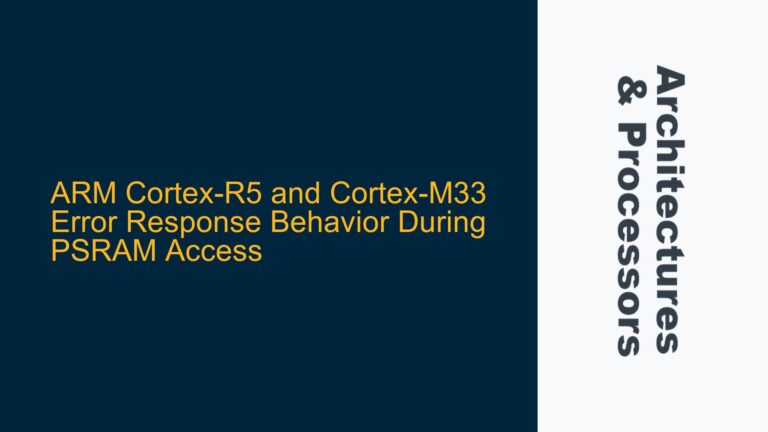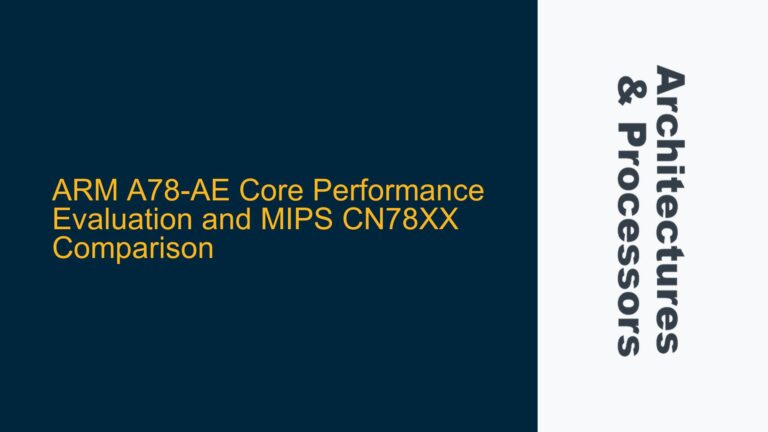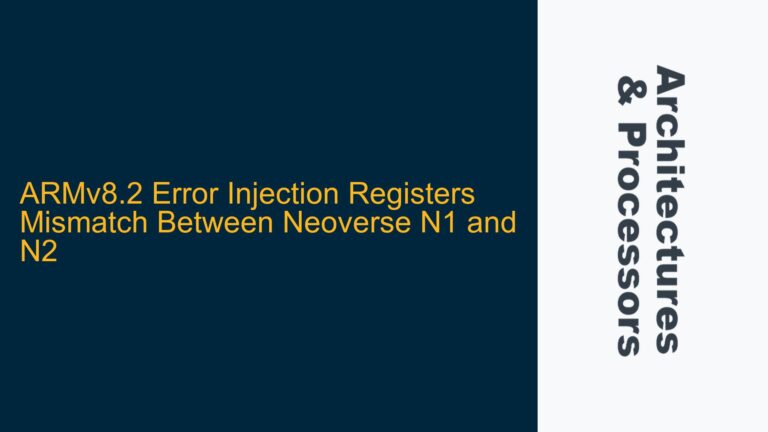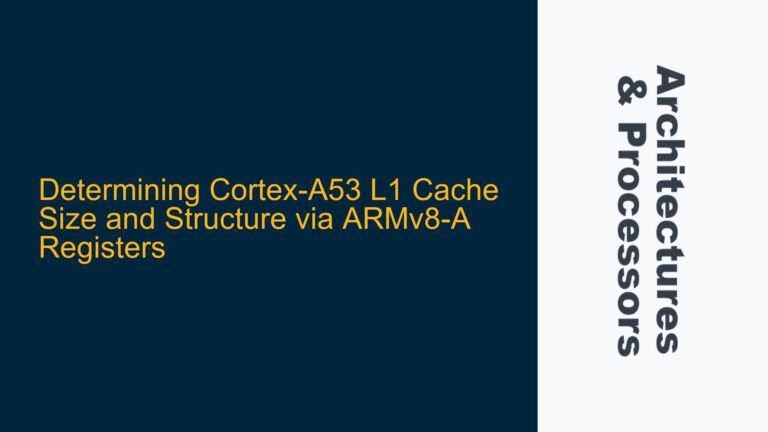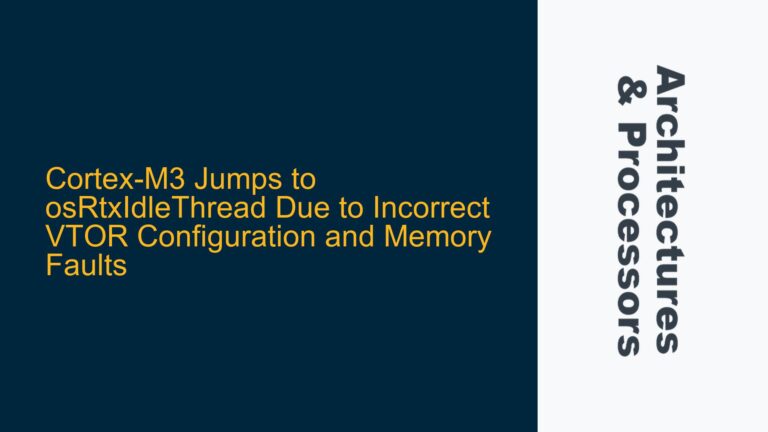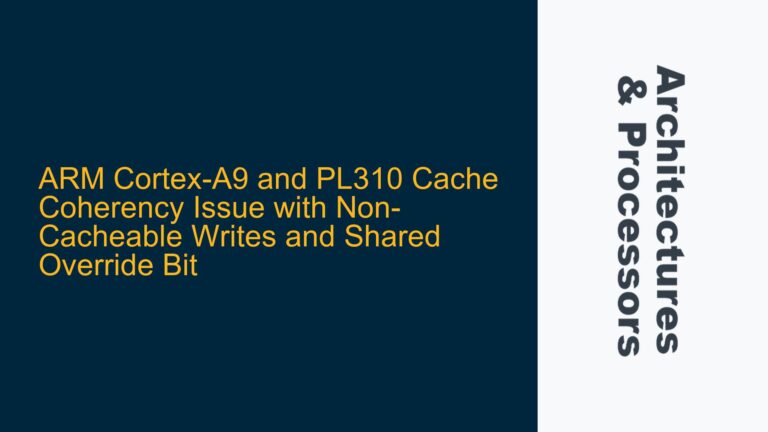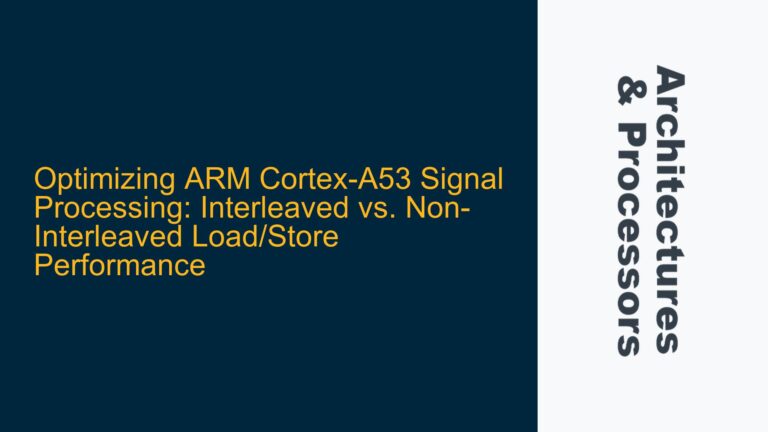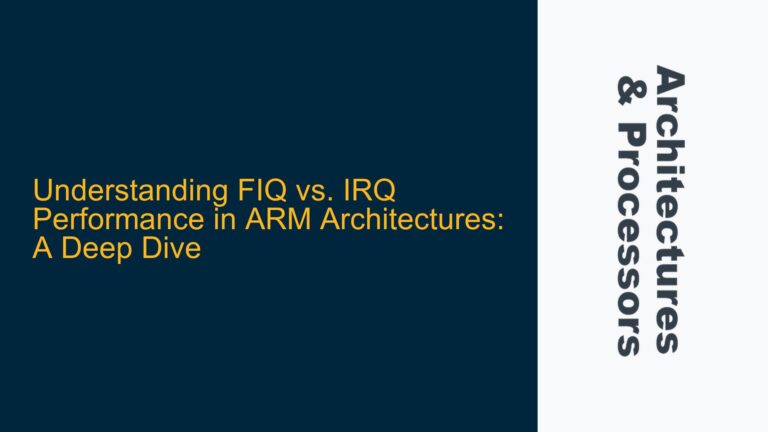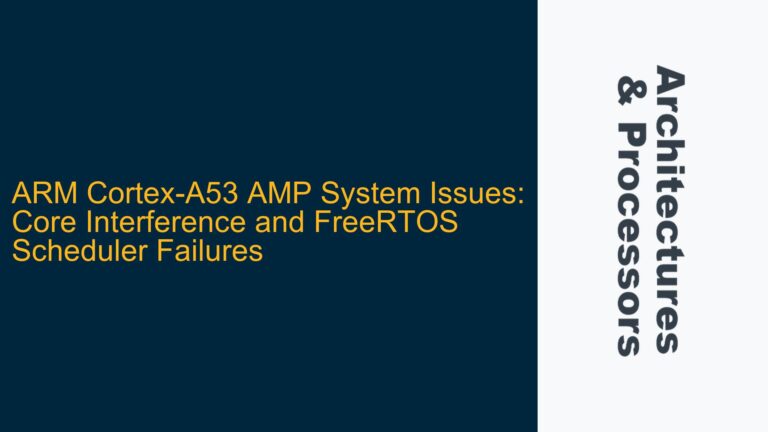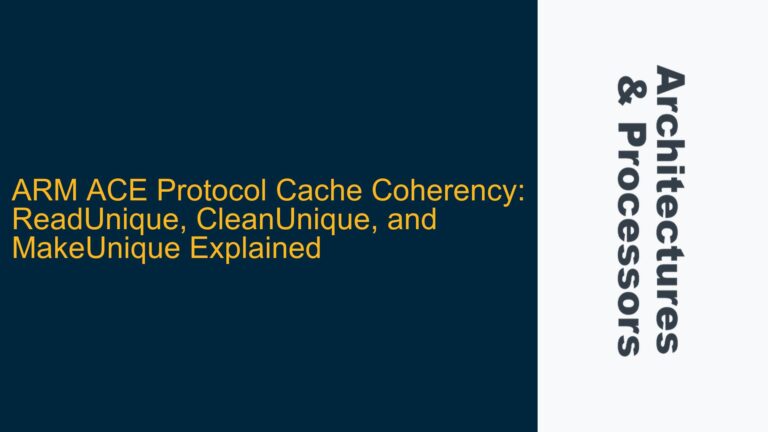ARM Cortex-R5 and Cortex-M33 Error Response Behavior During PSRAM Access
ARM Cortex-R5 and Cortex-M33 Exception Handling During Read and Write Errors The behavior of ARM Cortex-R5 and Cortex-M33 processors when receiving error response signals during memory access operations, particularly with PSRAM, is a critical aspect of system reliability and fault tolerance. In this scenario, the Cortex-R5 and Cortex-M33 exhibit different behaviors when encountering read and…
